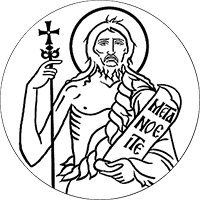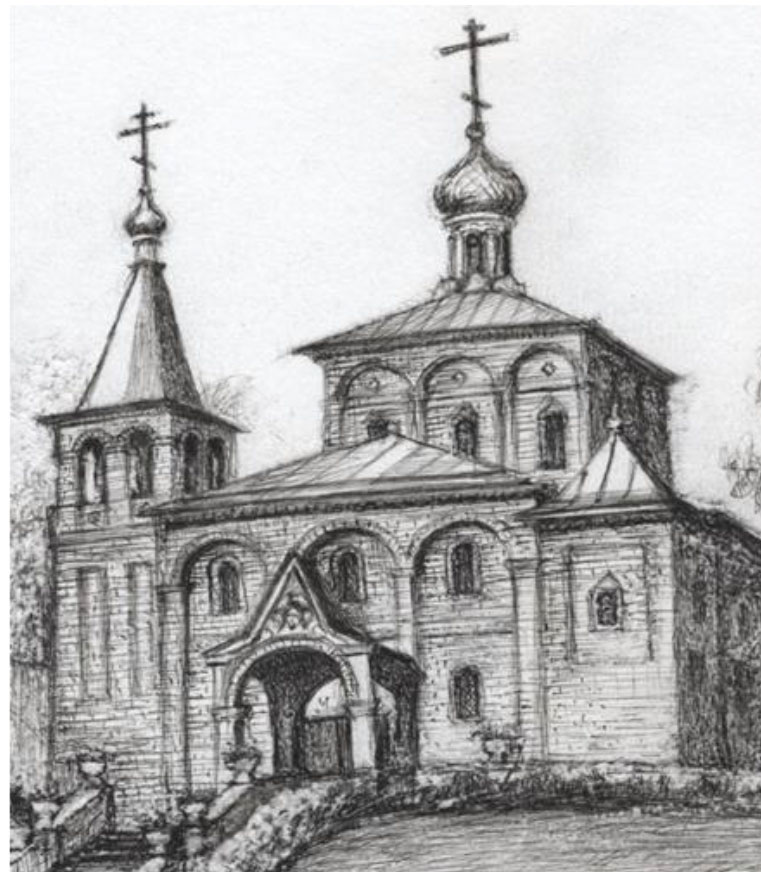You are here
Venerable St. Joseph the Hymnographer
4/17 April
 Venerable Joseph the Hymnographer was born into a pious Christian family in Sicily. His parents Plotinus and Agatha moved to the Peloponesses to save themselves from the barbarian invasion. At the age of 15, St. Joseph went to Thessalonica and entered a monastery. He was distinguished by his piety, industriousness, and humility, and was loved by all of the monastery brethren. Later, the Venerable One was ordained a presbyter.
Venerable Joseph the Hymnographer was born into a pious Christian family in Sicily. His parents Plotinus and Agatha moved to the Peloponesses to save themselves from the barbarian invasion. At the age of 15, St. Joseph went to Thessalonica and entered a monastery. He was distinguished by his piety, industriousness, and humility, and was loved by all of the monastery brethren. Later, the Venerable One was ordained a presbyter.
Venerable St. Gregory the Decapolite (commemorated November 20) visited the monastery and took notice of the young monk. He took him to Constantinople and together with him lived near the Church of the Holy Martyrs Sts. Sergius and Bacchus. This was during the reign of Leo the Armenian (813 - 820) – a time of cruel persecutions at the hands of the iconoclasts. Sts. Gregory and Joseph fearlessly defended the revering of holy icons. They preached in public squares throughout the city, and visited Orthodox homes to strengthen the people’s resolve to stand up against the heretics. The Church of Constantinople was in a very difficult position; not only the Emperor, but also the Patriarch, were iconoclasts.
At the time, the Roman bishops were in union with the Ecumenical Church, and Pope Leo III, who was not subject to the authority of the Byzantine Emperor, was in a position to render considerable assistance to the Orthodox. The Orthodox monastics chose as their emissary to the Pope Venerable Joseph, the most steadfast and oratorically gifted among them. Venerable Gregory blessed him to go to Rome and give an account of the situation of the Church of Constantinople and of the danger threatening Orthodoxy.
On his journey, Venerable Joseph was seized by Arab bandits who had been bribed by the iconoclasts; he was sent off to the island of Crete. There they turned him over to the iconoclasts, who locked him up in a dungeon. Courageously enduring all his deprivations, he also provided support to the other prisoners. By the prayers of the Venerable One, a certain Orthodox bishop who had begun to waver was so bolstered in spirit that he courageously accepted a martyr’s death.
Venerable St. Joseph spent six years in prison. On the night of the Nativity in the year 820, he had a vision of Holy Hierarch St. Nicholas of Myra in Lyceia, who announced to him that the persecutor, Leo the Armenian, had died, and that persecution against the holy icons had come to an end. The Holy Hierarch gave the Venerable One a scroll and said, “Take this scroll and eat it.” On the scroll were the words, “Hasten, O Bountiful One and as Thou art merciful, hasten to come to our aid, for as Thou wilst, Thou canst…” The Venerable One read the words, ate the scroll, and said, ‘How sweet are thy words unto my taste!’ (Psalm 118[KJV 119]: 103). St. Nicholas directed that he sing those words. Thereafter, the fetters that had been holding the Venerable One fell off, and the prison doors opened; he walked unhindered out of the prison, and was caught up into the air and put down near Constantinople, on the great highway leading into the city. Venerable Joseph did not arrive in Constantinople in time to see the late Venerable St. Gregory the Decapolite, but he met with his disciple Blessed John (Commemorated April 18), who reposed soon thereafter. Venerable St. Joseph erected a church dedicated to St. Nicholas, and transferred the relics of Venerable Sts. Gregory and John to that church. A monastery was established next to that church.
A certain benefactor gave Venerable St. Joseph a relic of the Holy Apostle Bartholomew. St. Joseph erected a church dedicated to the Holy Apostle and wanted to solemnly honor his memory, but was distressed at the lack of hymns of praise dedicated to the memory of the Holy Apostle; he did not dare compose such hymns himself. For forty days, he tearfully prayed, preparing himself for the Feast of St. Bartholomew. On the eve of the Feast, the Apostle Bartholomew appeared to St. Joseph in the Altar, placed the Holy Gospels against his chest, and blessed him to write ecclesiastical hymns, saying “May the Right Hand of Almighty God bless thee, may Heavenly Wisdom pour out upon thy tongue, may thy heart be a temple of the Holy Spirit, and may thy hymnody sweeten the universe.” After that marvelous apparition, Venerable Joseph wrote the canon to Holy Apostle Bartholomew, and from then on began to compose liturgical hymns in honor of the Mother of God, the Saints, including Holy Hierarch St. Nicholas, who had liberated him from prison.
During the resurgence of iconoclasm in the reign of Emperor Theophilos (829 - 842), Venerable St. Joseph once again suffered at the hands of the heretics. For 11 years he was exiled to Chersones. In 842, during the reign of Empress Theodora (commemorated on February 11), who restored the Orthodox practice of veneration of Holy Icons, Venerable St. Joseph was appointed keeper of the holy vessels in the Cathedral of the Holy Wisdom (Hagia Sophia) in Constantinople. However, in return for his courageously criticizing the empress’ brother Varda for living in an illicit relationship, he was once again exiled, to return only after the death of Varda in 867.
Patriarch Photios (857 - 867, 877 - 886) restored him to his former position and appointed him spiritual director for all of the clergy of Constantinople.
After attaining extremely advanced age, St. Joseph fell ill. In a vision received on Great Friday, just before Pascha itself, his approaching death was revealed to him by the Lord. The Venerable One made, and dispatched to Patriarch Photios, an inventory of the church property belonging to the Cathedral of the Holy Wisdom that had entrusted to him. He spent several days in fervent prayer in preparation for his death. In his prayers, the Venerable One asked for peace for the Church, and for God’s mercy upon his soul. After Communing of the Holy Gifts of Christ, St. Joseph blessed everyone around him, and joyously presented himself up to God (+ 883). The Angels and Saints whom Venerable St. Joseph had glorified in his hymnodies joined him in solemn procession to the World on High.
PARISH LIFE
RECENT VIDEOS
Address of our Cathedral
Subscribe to our mailing list
While all the materials on this site are copyrighted, you may use them freely as long as you treat them
with respect and provide attribution on the Russian Orthodox Cathedral of St.John the Baptist of Washington DC.









